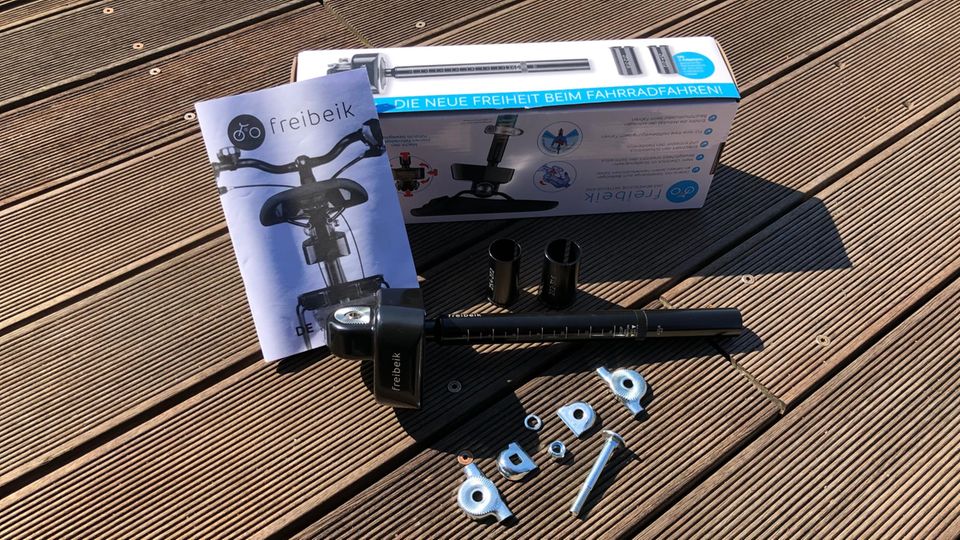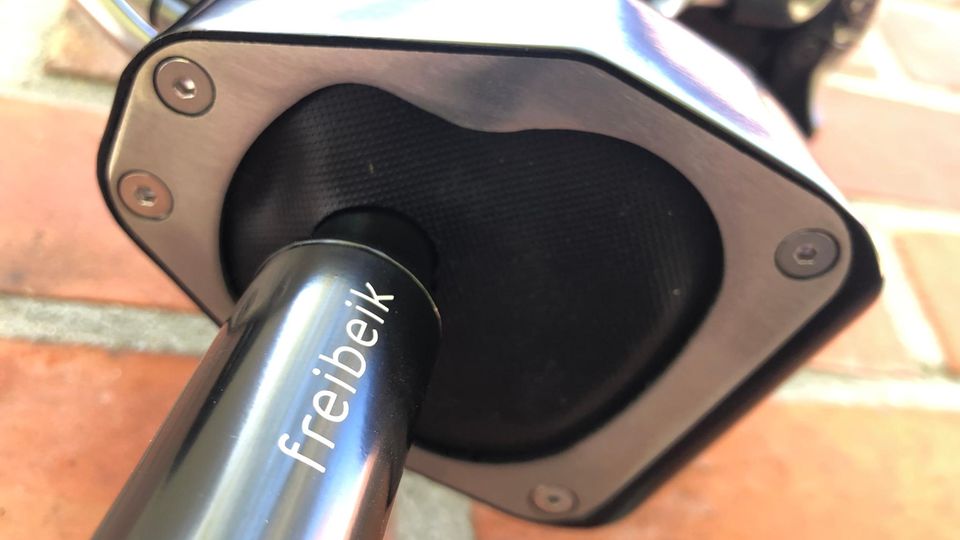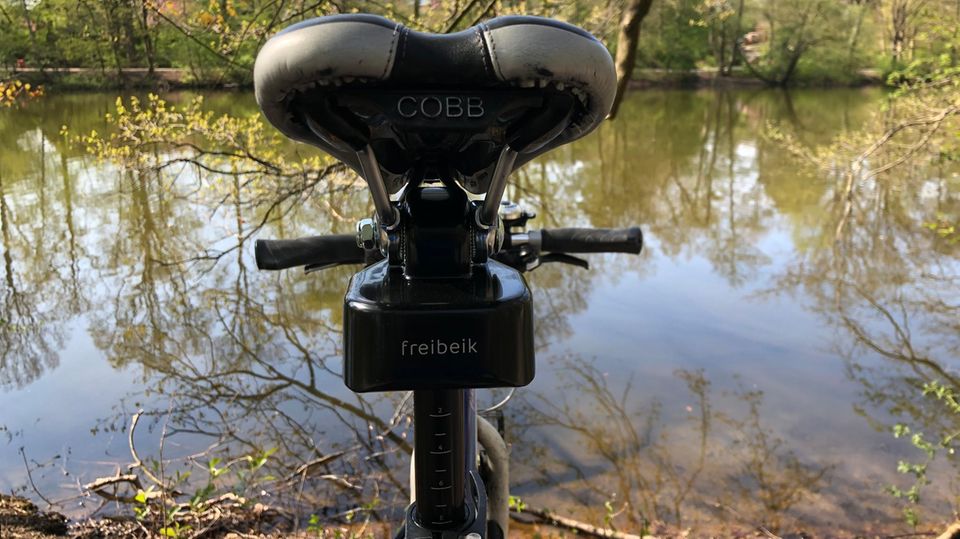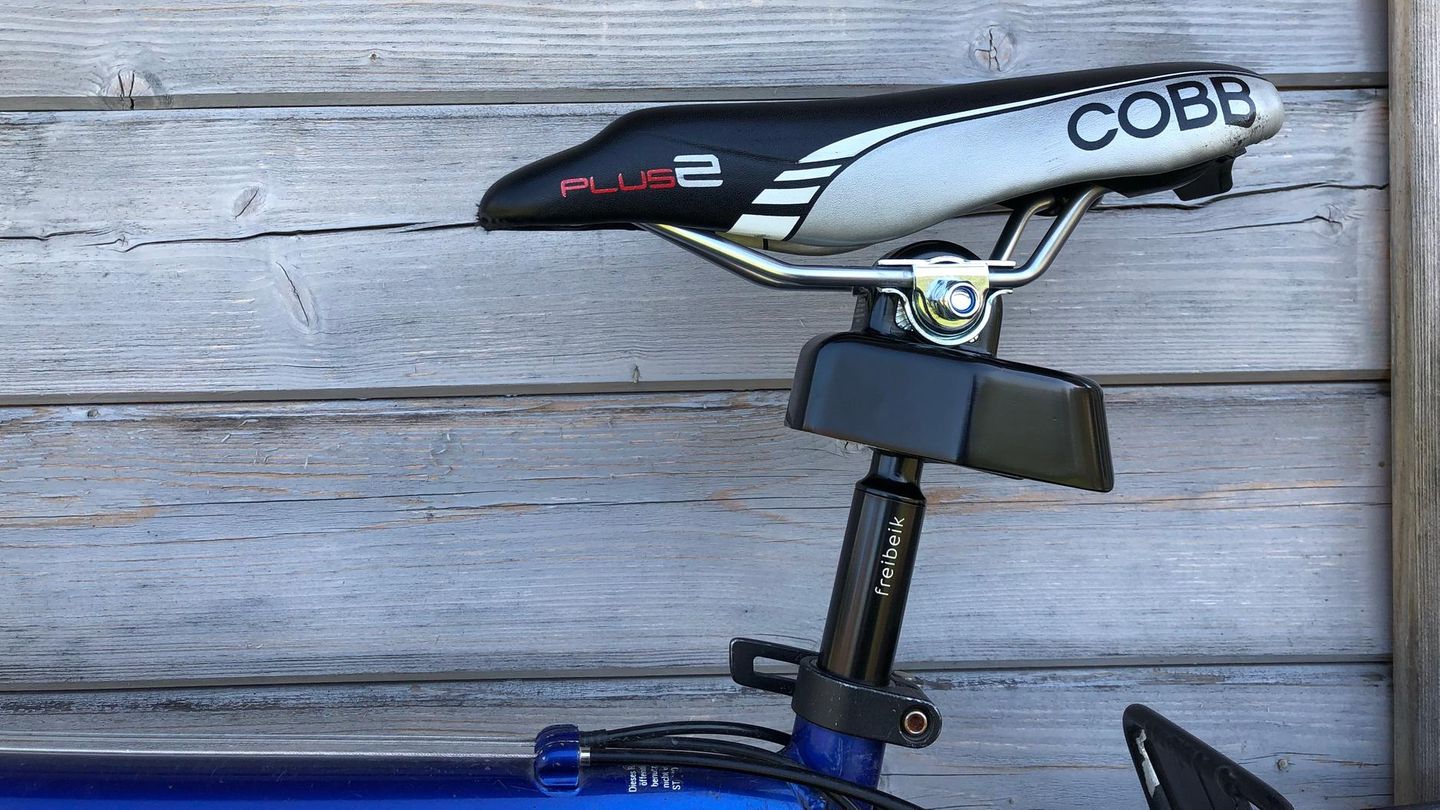A family from Bremen wants to conquer the bike market with a flexible saddle joint. Freibeik tilts the saddle up to 15° in each direction while riding. What is that good for? We also asked ourselves. Freibeik im star-Check.
Millions of Germans get on their bikes every day. Many cycle to the office, some to the supermarket and more and more people pedal to stay fit. Whether with or without a battery on board. Regardless of whether you are a hobby cyclist or a cyclist: cycling is healthy. Iris-Sabine Langstädtler is also convinced of this. Almost everything in the life of the 58-year-old from Bremen revolves around bikes. With her husband Matthias she runs the two-wheeler shop “Bikes & Wheels” in the Hanseatic city. And customers there repeatedly asked about one topic. “One of the main concerns are problems with the saddle,” reports Langstädtler. “Many complain about back pain or about how uncomfortable they are sitting on the bike.” And it was precisely this problem that the retail clerk took on a few years ago. “Saddles are rigidly mounted on the seatpost. That rigidity doesn’t allow for any movement of the back,” she explains. Her second great passion, horseback riding, gave Langstadtler the brilliant idea.
Anyone who has ever sat on horseback can at least guess what the inventor of means. So she immersed herself in the world of biomechanics and transferred the mobility and dynamics of riding to a tool that is supposed to offer exactly these advantages when cycling. She christened this tool Freibeik. The highlight: Langstädtler mounted an all-round movable saddle joint with an equally ordinary saddle mount on an ordinary seat post. On May 2, 2022, she and her daughter Carmen fought for the favor of investors and almost 200,000 in capital on the VOX start-up show “Die Höhle der Löwen”.
We’ve already installed Freibeik and jumped on our mountain bikes for a practical test. How does it feel to ride with a shaky saddle?
Unboxing: The first impression

When you open the box, there are only three parts inside, namely the seat post with the movable joint and two sleeves with which the seat tube can be adjusted to the diameter of Freibeik. In addition there is the instruction manual. If you open the assembly and have a size 13 open-end wrench or ratchet with the appropriate socket ready, you are on the safe side for the time being.
How to assemble the Freibeik saddle joint step by step:
- Remove previous seat post and unscrew saddle.
- Loosen the nut and bolt from the Freibiik saddle joint and remove all individual parts.
- Place new saddle mounts on the underside of the saddle and push onto the free-riding joint.
- Put on the saddle fixings, first tighten loosely with the axle bolt, spring washer and nut.
- Insert the seat post into the seat tube and slide it down at least to the 9 mark. Depending on the diameter of the saddle tube, use a reducing sleeve that is supplied.
- Finely adjust the position of the saddle and tighten the axle bolt and nut (recommended value 20 Nm)
It only took us a few minutes to unpack, read and assemble. The instructions are easy to understand and even inexperienced bike mechanics should be able to carry out this small intervention in a reasonable amount of time. The Freibeik saddle joint is 340 mm long and weighs 860 grams. A small drop of bitterness for everyone who has to balance their bike up the basement stairs every day. Why? Commercially available aluminum seat posts only weigh around 250 grams. Aluminum was also used in the Freibeik saddle joint. According to the product description, it is also made of stainless steel, steel and polyurethane. That explains the extra weight. Overall, the first impression is quite positive. The Freibeik saddle joint is neatly finished and comes in elegant black with fine engraving. The assembly is very easy. In our case, one of the high-quality reducing sleeves helped to adjust the post to the seat tube. So much for foreplay.

Mount up: The test
Four promises catch our eye when we look at the Freibeik packaging. And that’s exactly what we tested the tool on a test lap with a mountain bike that has been tried and tested every day and is well broken in.
- Free hip movement when driving | The movable joint directly under the saddle allows the seat to tilt up to 15° in any direction. This feels a bit strange and unfamiliar at first. Even with normal pedaling at a slightly higher cadence, the slight tilting of the saddle can be felt. And as time goes by, it becomes quite pleasant. Because subjectively, the joint also absorbs small waves and impacts. Depending on the driver’s seating position or cornering position, the saddle adjusts its position. And surprisingly precise and balanced. In short: the hips are not blocked by the saddle, but are permanently released.
- Greater mobility expands the field of view | This point follows from the impressions just mentioned. We were not able to determine by how many degrees the field of view actually increases, for example when looking over the shoulder. However, we would agree that turning the hips when looking backwards for safety is at least a little less difficult due to the slight tilting of the saddle.
- Facilitates looking over the shoulder and relieves the neck area | As mentioned, the hips actually react a little more easily when looking backwards. In the long run, this may also have a positive effect on the throat and neck area. However, we cannot prove this medically. Another note on looking over your shoulder: If you look backwards over your right shoulder, the saddle leans slightly to the left and vice versa due to the shift in weight.
- Increases the activity of the oblique muscles | Here, too, we can make assumptions. Due to the greater freedom of movement, the lateral abdominal muscles should be challenged and trained more than usual when riding with the Freibiik saddle joint. That sounds quite plausible from our point of view. After a test drive of almost an hour, it can neither be confirmed nor disproved.
Descend: The conclusion

We don’t want to celebrate Iris-Sabine Langstädtler’s invention as a revolution here. That’s a bit too much for us. Still: did brilliantly in our test. From setting up to dismounting. The tool is easy to assemble even for inexperienced screwdrivers, works excellently and does what the founders promise. At least as far as we were able to verify during the test. In the first few minutes, riding feels a bit unfamiliar, but the saddle doesn’t wobble, but leans slightly to the right, left, forwards or backwards depending on the weight shift. Precise and sensitive. We got used to the new hip freedom very quickly and never found the slight wobbling to be bothersome. At a reasonable price, the Freibeik saddle joint is an option that we can recommend, especially for cyclists with back problems, but also for those who often struggle with numbness or chafing in the seating area. And if you don’t have any complaints of this kind, with Freibeik you get not only a piece of freedom but also a little more security among your behinds.
Further information are available here.
Source: Stern




